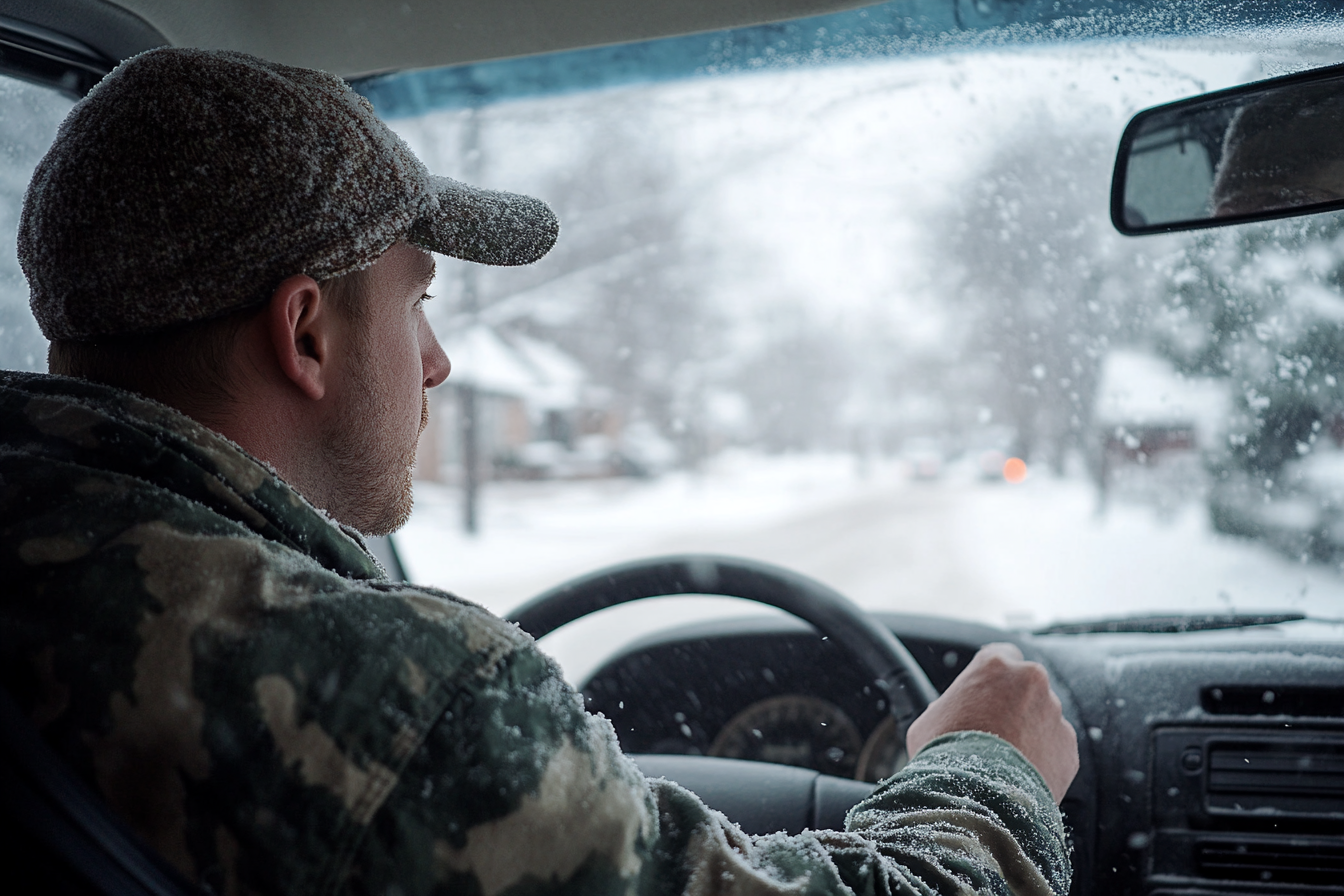
As essential sensory organs, our eyes enable us to see and understand the world around us. Preserving our eyes against dangerous diseases and infections is a crucial part of keeping them in optimal health and maintaining our eyesight.
Many things, such as bacteria, viruses, allergies, and poor eye care techniques, can result in eye infections. We’ll look at a few key tactics in this post that can help you avoid eye infections and keep your vision intact for years to come.

- Frequent Handwashing: One of the best defenses against eye infections is keeping your hands clean. To get rid of dangerous bacteria and viruses, properly wash your hands with soap and water before handling contact lenses or touching your eyes.
- Avoid Eye Touching: Several surfaces that come into contact with our hands could be home to dangerous microbes. Avoid unnecessary eye touching or rubbing, as it can introduce bacteria and irritants, potentially leading to infections or worsening existing ones.
- Proper Contact Lens Care: Follow your eye doctor’s instructions on proper cleanliness if you wear contact lenses. Unless your eye care specialist instructs you otherwise, clean and sanitize your lenses on a regular basis, replace them when necessary, and refrain from sleeping with them on.
- Eyewear Hygiene: If your glasses or sunglasses come into touch with dust, debris, or bacteria, make sure they are cleaned and sanitized on a regular basis to avoid transferring these elements to your eyes.
- Personal Eye Makeup: By dispersing bacteria and viruses, sharing eye makeup products with others raises the risk of eye infections. Avoid borrowing or lending eyeliner, mascara, or eye shadow, and replace your eye makeup regularly to prevent the buildup of harmful microorganisms.
- Protection in Polluted Environments: Use the proper goggles or eye protection if you reside in or are exposed to extremely polluted environments with irritants like smoke, dust, or chemicals to reduce the risk of injury to your eyes.
- Allergy Awareness:Avoid rubbing your eyes if you are prone to allergies brought on by pollen or pet dander and use over-the-counter or prescription antihistamine eye drops to relieve symptoms.
- Maintain a Healthy Lifestyle: Maintaining optimal eye health requires a diet rich in important vitamins and minerals, especially vitamin A, and well-balanced. Include items like salmon, citrus fruits, carrots, and spinach in your diet. In addition to hydrating your eyes, maintaining adequate hydration lowers your chance of developing dry eye infections.
- Regular Eye Exams: Early detection and prevention of eye infections and other eye-related issues require routine eye exams by optometrists or ophthalmologists. These experts are capable of spotting possible issues and offering insightful advice to protect the health of your eyes.
- Give Your Eyes a Break: To reduce eye fatigue caused by prolonged screen time, follow the 20-20-20 rule—every 20 minutes, look at something 20 feet away for 20 seconds. This easy routine can assist in lowering the incidence of eye infections.

In conclusion, you can successfully prevent infections in your eyes by implementing these simple procedures into your everyday routine. You may preserve clean, clear eyesight by doing frequent eye exams, paying attention to eye care products, and emphasizing excellent cleanliness. To preserve your vision and enjoy the world’s beauty with healthy eyes, always remember that prevention is always better to treatment.
How to Keep Your Eyes Healthy
1. Eat Well
Good eye health starts with the food on your plate. Nutrients like omega-3 fatty acids, lutein, zinc, and vitamins C and E might help ward off age-related vision problems like macular degeneration and cataracts. To get them, fill your plate with:
- Green leafy vegetables like spinach, kale, and collards
- Salmon, tuna, and other oily fish
- Eggs, nuts, beans, and other nonmeat protein sources
- Oranges and other citrus fruits or juices
- Oysters and pork
A well-balanced diet also helps you stay at a healthy weight. That lowers your odds of obesity and related diseases like type 2 diabetes, which is the leading cause of blindness in adults.
2. Quit Smoking
It makes you more likely to get cataracts, damage to your optic nerve, and macular degeneration, among many other medical problems. If you’ve tried to kick the habit before only to start again, keep at it. The more times you try to quit, the more likely you are to succeed. Ask your doctor for help.
3. Wear Sunglasses
The right pair of shades will help protect your eyes from the sun’s ultraviolet (UV) rays. Too much UV exposure boosts your chances of cataracts and macular degeneration.
Choose a pair that blocks 99% to 100% of UVA and UVB rays. Wraparound lenses help protect your eyes from the side. Polarized lenses reduce glare while you drive, but don’t necessarily offer added protection.If you wear contact lenses, some offer UV protection. It’s still a good idea to wear sunglasses for an extra layer.
4. Use Safety Eyewear
If you use hazardous or airborne materials on the job or at home, wear safety glasses or protective goggles.
Sports like ice hockey, racquetball, and lacrosse can also lead to eye injury. Wear eye protection. Helmets with protective face masks or sports goggles with polycarbonate lenses will shield your eyes.
5. Look Away From the Computer Screen
Staring at a computer or phone screen for too long can cause:
- Eyestrain
- Blurry vision
- Trouble focusing at a distance
- Dry eyes
- Headaches
- Neck, back, and shoulder pain
To protect your eyes:
- Make sure your glasses or contacts prescription is up to date and good for looking at a computer screen.
- If your eye strain won’t go away, talk to your doctor about computer glasses.
- Move the screen so your eyes are level with the top of the monitor. That lets you look slightly down at the screen.
- Try to avoid glare from windows and lights. Use an anti-glare screen if needed.
- Choose a comfortable, supportive chair. Position it so that your feet are flat on the floor.
- If your eyes are dry, blink more or try using artificial tears.
- Rest your eyes every 20 minutes. Look 20 feet away for 20 seconds. Get up at least every 2 hours and take a 15-minute break.
6. Visit Your Eye Doctor Regularly
Everyone needs a regular eye exam, even young children. It helps protect your sight and lets you see your best.
Eye exams can also find diseases, like glaucoma, that have no symptoms. It’s important to spot them early on, when they’re easier to treat.
Depending on your eye health needs, you can see one of two types of doctors:
- Ophthalmologists are medical doctors who specialize in eye care. They can provide general eye care, treat eye diseases, and perform eye surgery.
- Optometrists have had 4 years of specialized training after college. They provide general eye care and can diagnose and treat most eye diseases. They don’t do eye surgery.
A comprehensive eye exam might include:
- Talking about your personal and family medical history
- Vision tests to see if you’re nearsighted, farsighted, have an astigmatism (a curved cornea that blurs vision), or presbyopia (age-related vision changes)
- Tests to see how well your eyes work together
- Eye pressure and optic nerve tests to check for glaucoma
- External and microscopic examination of your eyes before and after dilation
You might also need other tests.
Step into a world dedicated entirely to man’s best friend – dogs. Our website is a treasure trove of heartwarming news, touching stories, and inspiring narratives centered around these incredible creatures. We invite you to join us in spreading the joy. Share our posts, stories, and articles with your friends, extending the warmth and inspiration to every corner.With a simple click, you can be part of this movement.
Volví para Navidad sin avisar y descubrí a mis hijos en el auto – Su historia me hizo correr hacia la casa

Después de meses fuera, pensé que sorprender a mi familia en Nochebuena sería perfecto. En lugar de eso, encontré a mis hijos acurrucados en nuestro auto, diciendo que su madre estaba “ocupada con un hombre”. Mientras me imaginaba lo peor, supe que nuestra Navidad iba a ser un desastre.
Los limpiaparabrisas perdían la batalla contra la nieve mientras manejaba el automóvil por la calle de nuestro barrio.

Un hombre conduciendo por la nieve | Fuente: Midjourney
Después de tres meses de interminables viajes de negocios, por fin me dirigía a casa en Nochebuena. El reloj del tablero marcaba las 19:43: el momento perfecto para sorprender a Sarah y a los niños.
“Espera a que vean lo que hay en el maletero”, murmuré, pensando en el montón de regalos cuidadosamente envueltos que había comprado durante mis viajes.
Tres meses era mucho tiempo para estar fuera, pero me había asegurado de que cada regalo fuera lo bastante especial como para compensar mi ausencia.

Un hombre sonriendo mientras conduce | Fuente: Midjourney
El kit de modelismo de cohetes para Tommy, los materiales de arte para el nuevo interés de Jake por la pintura y el joyero vintage que había encontrado para Sarah en aquella pequeña tienda de antigüedades de Boston.
Al girar hacia nuestra calle, las luces navideñas de las casas vecinas proyectaban sombras de colores sobre la nieve fresca. Nuestra casa destacó de inmediato; Sarah se había superado este año con la decoración.
Cadenas de luces blancas en forma de carámbanos colgaban de los aleros, y unos renos iluminados “pastoreaban” en el césped del frente. Pero algo lucía raro.

Una casa decorada para Navidad | Fuente: Midjourney
La puerta del garaje estaba ligeramente abierta, a unos veinte centímetros del suelo, dejando escapar una fina franja de luz.
“Qué raro”, me dije, frunciendo el ceño.
Sarah siempre era meticulosa con la seguridad, sobre todo cuando yo no estaba. Comprobaba que las puertas y ventanas estuviesen cerradas tres veces antes de acostarse, un hábito que me había tranquilizado durante mis prolongadas ausencias.
Entré en el garaje y apagué el motor.

Un Automóvil aparcado en una entrada | Fuente: Midjourney
Fue entonces cuando me di cuenta de que el coche de Sarah estaba allí, y de que en el asiento trasero había dos pequeños bultos. Se me encogió el corazón al reconocer a Tommy y Jake, abrigados con sus abrigos de invierno, sentados totalmente inmóviles.
Salté del coche, y mis zapatos de vestir crujieron en la nieve fresca mientras corría hacia allí. Tommy, mi hijo de nueve años, me vio primero y abrió mucho los ojos.
“¡Papá!”, susurró en voz alta, bajando la ventanilla. “¡Todavía no deberías estar en casa!”.

Dos niños abrigados en un Automóvil | Fuente: Midjourney
“¿Qué están haciendo aquí afuera? pregunté, mirandolos a ellos y a la casa. “¡Está helado!”
Jake, mi hijo de siete años, se inclinó hacia delante, con el aliento formando nubecillas en el aire frío. “Mamá dijo que teníamos que quedarnos aquí afuera. Está haciendo cosas importantes adentro”.
“¿Cosas importantes?”, repetí. “¿Qué podría estar haciendo para enviarlos aquí fuera, con el frío que hace?”

Un hombre junto a un Automóvil en un garaje | Fuente: Midjourney
Tommy murmuró algo que no pude entender y apartó la mirada, con una expresión de culpabilidad en el rostro.
“No lo sé, papá”, respondió Jake. “Está ocupada con un hombre y dijo que teníamos que esperar aquí hasta que terminaran”.
Las palabras me golpearon como un puñetazo en .el estómago
“¿Qué hombre?”, pregunté. “¿Y cuánto tiempo llevan aquí fuera?”.

Un hombre iracundo en un garaje | Fuente: Midjourney
“No lo sé”, se encogió de hombros Tommy, ajustándose la gorrita de Spiderman. “¿Quizá veinte minutos? Mamá dijo que no podíamos entrar hasta que viniera a buscarnos. Hablaba muy en serio”.
Mi mente pensaba posibilidades, cada una peor que la anterior.
Sarah se había comportado de forma extraña durante nuestras últimas llamadas telefónicas, distraída y evasiva cuando le preguntaba por nuestros planes para las vacaciones. Lo había atribuido al estrés, pero ahora… Miré la puerta que daba al interior desde el garaje. ¿Me estaba engañando Sarah?

Un hombre preocupado | Fuente: Midjourney
La idea se clavó en mi mente como una espina. No podía imaginarme que Sarah me fuera infiel, y nada menos que en Nochebuena, pero tampoco podía quitarme de la cabeza la idea de que algo turbio estaba ocurriendo dentro de mi casa.
“Vamos, chicos”, dije, intentando mantener la voz firme. “Vamos dentro”.
“Pero mamá dijo…”, Jake empezó a protestar, con el labio inferior temblándole ligeramente.
“Ahora”, interrumpí.

Un hombre hablando con un niño | Fuente: Midjourney
Intercambiaron miradas de preocupación, pero salieron.
La puerta del garaje crujió cuando entramos. La casa estaba inusualmente oscura, salvo por un débil resplandor procedente del salón.
El corazón me latía con fuerza en los oídos mientras avanzábamos por la cocina. Podía oír voces apagadas más adelante: la risa grave de un hombre y la risita familiar de Sarah.
“Quedense detrás de mí”, susurré a los chicos, con los puños cerrados mientras nos acercábamos al salón.

Un hombre preocupado en una casa | Fuente: Midjourney
Las voces se hicieron más claras y vislumbré movimiento a través de la puerta parcialmente abierta. De repente, sentí que el anillo de boda me pesaba en el dedo.
Respiré hondo, preparándome para lo que fuera a encontrarme. Con un movimiento rápido, abrí la puerta de par en par.
“¡SORPRESA!”
La habitación estalló en luz y sonido.

Gente en una sala de estar | Fuente: Midjourney
Decenas de caras conocidas me saludaban: mis padres, la familia de Sarah, nuestros vecinos e incluso algunos compañeros de trabajo.
Una enorme pancarta de “Bienvenido a casa” se extendía sobre la chimenea y una montaña de regalos rodeaba nuestro árbol de Navidad. El aire olía a sidra caliente y a las famosas galletas de azúcar de Sarah.
Sarah se abalanzó sobre mí y me rodeó el cuello con sus brazos.

Una pareja abrazándose | Fuente: Midjourney
“¡Caíste!”, exclamó, con los ojos brillantes de picardía. “¡Deberías ver tu cara ahora mismo! Parece que viste un fantasma”.
Me quedé helado, con el cerebro luchando por comprender lo que estaba ocurriendo. Detrás de mí, Tommy y Jake estallaron a carcajadas.
“Lo hemos hecho bien, ¿verdad, mamá?”, preguntó Tommy con orgullo, saltando sobre las puntas de los pies. “¡Nos hemos quedado en el automóvil tal y como dijiste!”.

Un niño feliz | Fuente: Midjourney
Sarah se rió, apretando a los dos. “¡Han estado perfectos! ¡Tu padre no tenía ni idea! Y ni siquiera se quejaron del frío”.
“El hombre…” Empecé, aún procesándolo todo. “Oí la voz de un hombre…”.
“Ese era yo”, se adelantó mi hermano Mike, sonriendo. “Alguien tenía que ayudar a preparar el equipo de sonido para la fiesta. Aunque tengo que decir, hermano, luces como si estuvieras listo para pelar. ¿Debería preocuparme?”

Un hombre sonriente | Fuente: Midjourney
La tensión de mis hombros se liberó por fin, sustituida por una oleada de alivio y vergüenza. Sarah debió de ver mi cara, porque volvió a acercarse a mí.
“Mike nos contó tu plan de sorprendernos volviendo pronto a casa”, me susurró al oído, con su perfume familiar y reconfortante. “Así que decidí adelantarme. Feliz Navidad, cariño”.
“Genio malvado”, murmuré, sonriendo por fin. “¿Cuánto tiempo llevas planeándolo?

Una mujer con una sonrisa pícara hablando con su marido | Fuente: Midjourney
“Desde que me enteré”, admitió. “Supuse que necesitabas algo especial para volver a casa”.
El resto de la noche transcurrió entre risas, comida e innumerables relatos sobre cómo habían conseguido la sorpresa.
Mi madre no paraba de abrazarme, con los ojos empañados cada vez que me miraba. Papá no dejaba de darme palmadas en la espalda, mientras los chicos contaban con entusiasmo su papel en el engaño a cualquiera que quisiera escucharlos.

Familia y amigos celebrando juntos la Nochebuena | Fuente: Pexels
“Y luego tuvimos que sentarnos muy quietos en el auto”, explicó Jake a sus primos por tercera vez, haciendo un gesto dramático. “¡Como ninjas en una misión secreta!”.
“Lo más difícil fue no enviarte mensajes de texto al respecto”, admitió mi madre más tarde, mientras nos servíamos el ponche navideño de Sarah. “Cada vez que hablábamos, tenía miedo de meter la pata y mencionar algo sobre la fiesta”.
“No puedo creer que todo el mundo guardara el secreto”, dije, viendo cómo Tommy mostraba a su abuelo la técnica adecuada para mojar galletas de azúcar en chocolate caliente.

Una pareja sentada junta | Fuente: Midjourney
“Bueno, todos te echábamos de menos”, respondió suavemente. “Ésta era nuestra forma de demostrártelo”.
Más tarde, cuando los invitados se fueron y los niños se fueron a la cama, Sarah y yo nos sentamos en el sofá a contemplar el centelleo de las luces del árbol de Navidad.
La casa aún vibraba con el resplandor de la fiesta: tazas vacías en la mesa de café, restos de papel de regalo bajo el árbol y el calor persistente de haber estado llena de seres queridos.

Una pareja conversando | Fuente: Midjourney
“No puedo creer que me hayas engañado tan bien”, admití, acercándola hacia mi. “Cuando vi a los chicos en el automóvil y oí hablar del ‘hombre misterioso’… pensé cosas oscuras”.
Se rió suavemente, entrelazando sus dedos con los míos. “Casi me siento mal por esa parte. Casi. Pero tienes que admitir que fue una vuelta a casa inolvidable”.
Pensé en los regalos que aún tenía en el maletero del automóvil, los que había seleccionado cuidadosamente para compensar mi ausencia.

Un hombre reflexivo y sonriente | Fuente: Midjourney
Ahora me parecían casi una tontería, comparados con lo que Sarah me había dado esta noche: esta demonstración de lo mucho que me querían y de cuánta gente se había reunido para darme la bienvenida a casa.
“Sí”, asentí, besándole la cabeza. “Inolvidable es sin duda la palabra”.
La nieve seguía cayendo fuera de nuestra ventana, pero yo ya apenas notaba el frío. Tras meses de habitaciones de hotel y conferencias telefónicas, por fin estaba donde debía estar.

Nieve cayendo en un área suburbana | Fuente: Pexels
Sarah se movió a mi lado, bostezando. “Probablemente deberíamos limpiar el resto de este desastre”.
“Déjalo para mañana”, dije, acercándola. “Ahora mismo, sólo quiero sentarme aquí contigo y disfrutar de estar en casa”.
Sonrió y apoyó la cabeza en mi hombro. “Bienvenida a casa, amor. Feliz Navidad”.
Esta es otra historia: Sospeché cuando mi controladora madre nos exigió que utilizáramos su árbol de Navidad especial la primera vez que organizábamos la reunión familiar. Sin embargo, su falta de exigencias decorativas me cogió desprevenida… hasta que lo enchufamos y descubrimos la verdadera razón por la que insistía tanto en ese árbol.
Esta obra está inspirada en hechos y personas reales, pero se ha ficcionalizado con fines creativos. Se han cambiado nombres, personajes y detalles para proteger la intimidad y mejorar la narración. Cualquier parecido con personas reales, vivas o muertas, o con hechos reales es pura coincidencia y no es intención del autor.
El autor y el editor no garantizan la exactitud de los acontecimientos ni la representación de los personajes, y no se hacen responsables de ninguna interpretación errónea. Esta historia se proporciona “tal cual”, y las opiniones expresadas son las de los personajes y no reflejan los puntos de vista del autor ni del editor.



Leave a Reply